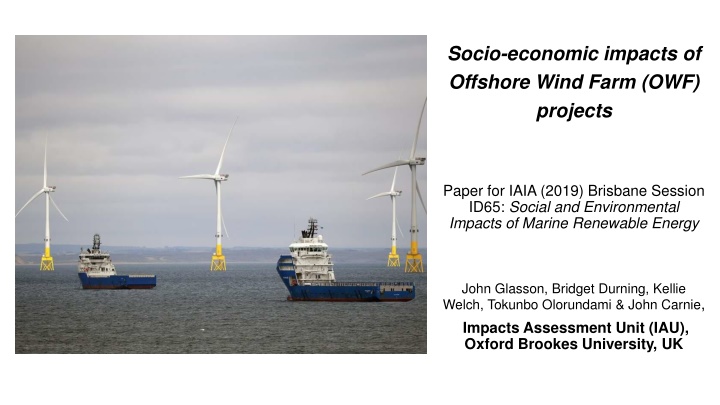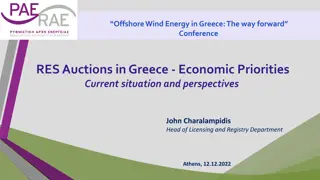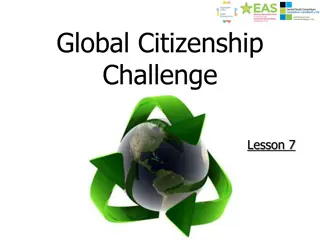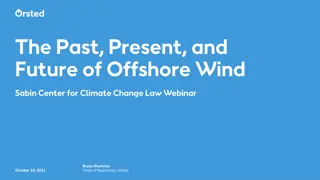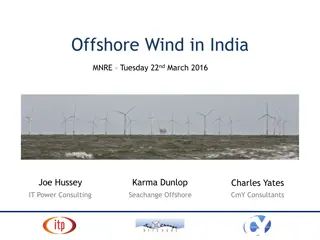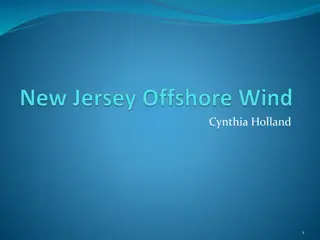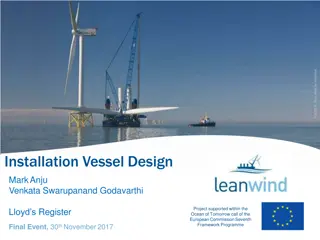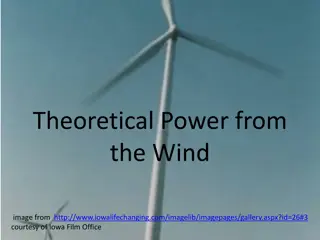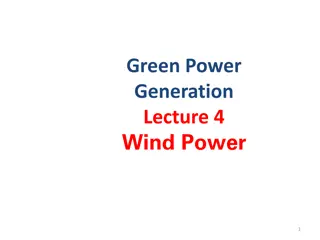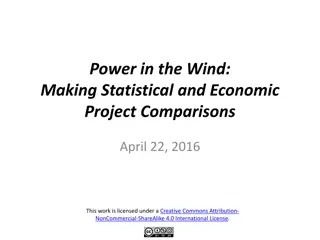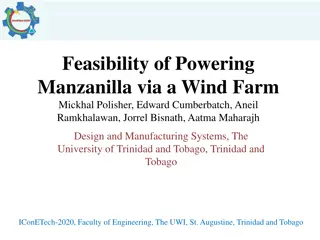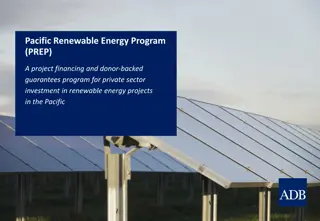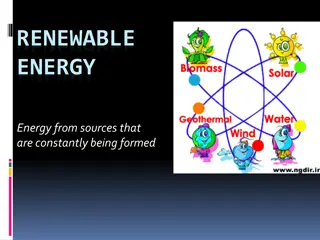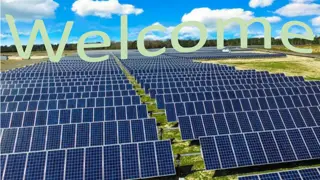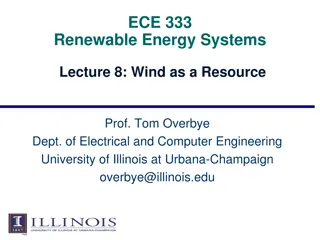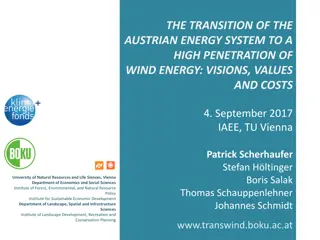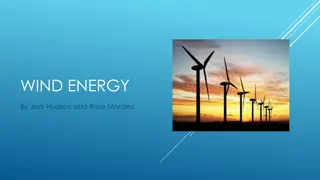Socio-Economic Impacts of Offshore Wind Farm Projects: A Study on Marine Renewable Energy
The paper presented at the IAIA Brisbane Session delves into the socio-economic impacts of Offshore Wind Farm (OWF) projects, focusing on the EU context, the range of impacts, research methodologies, and predicted versus actual impacts. The study reviews Environmental Statements (ESs) and case studies from the North Sea to highlight the opportunities and challenges in this rapidly evolving marine renewable energy industry.
Download Presentation

Please find below an Image/Link to download the presentation.
The content on the website is provided AS IS for your information and personal use only. It may not be sold, licensed, or shared on other websites without obtaining consent from the author.If you encounter any issues during the download, it is possible that the publisher has removed the file from their server.
You are allowed to download the files provided on this website for personal or commercial use, subject to the condition that they are used lawfully. All files are the property of their respective owners.
The content on the website is provided AS IS for your information and personal use only. It may not be sold, licensed, or shared on other websites without obtaining consent from the author.
E N D
Presentation Transcript
Socio-economic impacts of Offshore Wind Farm (OWF) projects Paper for IAIA (2019) Brisbane Session ID65: Social and Environmental Impacts of Marine Renewable Energy John Glasson, Bridget Durning, Kellie Welch, Tokunbo Olorundami & John Carnie, Impacts Assessment Unit (IAU), Oxford Brookes University, UK
Structure of the presentation 1. EU Marine Renewable Energy Context 2. Range of impacts of Offshore Wind Farm (OWF) Projects 3. Researching the Socio-Economic Impacts 4. Predicted Impacts from review of ESs 5. Actual Economic Impacts from North Sea Case Studies 6. Actual Social Impacts from North Sea case Studies 7. Major opportunities; but a technologically rapidly evolving marine renewable energy industry
2. Range of impacts of OWF projects ES OWF focus on a range of potential, largely biophysical, negative impacts, including: Socio economic impacts of OWFs have had lower profile (offshore, out of sight out of mind, economic leakage), but now rising: Ornithology: flight displacement; bird collision ( where widely used predictive algorithms may be ahead of evidence) Cetaceans disturbance, especially from pile driving Fishing disturbance Shipping routes diversions Conflicts with other seabed users e.g the oil and gas industry Integrated assessment Social licence to operate International drivers And potential to bring positive socio-economic impacts of a rapidly evolving technology to often deprived local and regional coastal communities
3. Researching the Socio-Economic Impacts of OWFs Aims: explore methods; compare predicted with actual impacts; highlight best practice in how to maximise local benefits. Methods: Examine relevant academic/professional literature Review socio-economic content in recent OWF ESs for UK and other EU states Monitor Vattenfall Aberdeen OWF over lifecycle ; review two other ongoing comparative studies -- Beatrice (NE Scotland), the Hornsea cluster (England E Coast) and floating OWFs.
4. What do the Environmental Statements (ESs) predict? Reviewed socio- economic content of ESs since 2010 for projects of 50 MW+. Included 24 UK projects, and 12 non-UK projects (Belgium, Netherlands, Denmark, Sweden and Ireland). 6
UK ES review -- -- projects range from 50 MW to 2400MW; contain proposals for over 15GW of power. All ESs include socio-economic effects -- from 17 to 150 pp Coverage of economic to social (c 5:1). Economic focuson employment and supply chain impacts Methodology scenario approach, giving wide range of impacts; port location issue ES predicted regional/medium impact scenario jobs per project MW for total construction FTEs c 0.5; for O&M pa FTE c 0.2 Also include other sector impacts, especially on tourism, shipping and fishing. Construction stage focus, especially offshore; but important to recognise onshore construction and the local potential of the impact of O&M stage. Growing importance ofcommunity benefits initiatives, which can be substantial over 20-25 years. Recent ESs include good practice of an Employment and Skills Plan, to support effective implementation of socio-economic undertakings.
5. Actual Economic Impacts from N Sea Case Studies Aberdeen project: small (96MW), innovative project (8.8MW turbines; suction buckets) Offshore construction work, at peak, had c500 workers on 33 installation vessels , involving 15 nationalities: Europeans (80%), British (10%), other (10%);very few local. Onshore construction work generates much higher ratio of local jobs. O&M staffing is predominantly local. ES predictions were high for construction stage; roughly in line for O&M stage.
The Hornsea projects massive OWF cluster with 900 turbines, c7GW. Off industrialised coast, with key ports. Hornsea 1 became operational in Feb 2019. Currently the world s largest OWF (1.2 GW). Cumulative set of overlapping socio-economic impacts: medium scenarios for H1 and H2 of each c1000 local construction jobs pa, and H3 2000. O&M stage c1000 jobs pa combined over lifecycles. Example of OWF hub development on a large scale: supply chain development, associated production initiatives (e.g. Siemens blade factory at Hull, Orsted O&M base at Grimsby).
6. Actual Social Impacts from North Sea case Studies Importance of engagement/social interaction programme -- ongoing engagement between Vattenfall and local Aberdeen community Initial community benefits -- Aberdeen Science Centre, Aberdeen FC, Blackdog Residents Association etc (c 80k to date). Establishment of a Community Benefits Fund of 150,000 pa for 20 years O&M stage. For Aberdeen City/Shire, with 10% pa ringfenced for Blackdog most impacted community. Jan 2019 survey of local residents --respondents were generally positive about impacts over the life cycle to date, but for the O&M stage, one stand-out response was about visual impacts. There was considerable surprise for some respondents at the size and nearness to shore of the windfarm.
7.Major opportunities; but a technologically rapidly evolving marine renewable energy industry OWFs --- a major marine renewable energy growth industry in Europe. Potential for local coastal economic benefit across project life cycle. Significant O&M stage: LR employment; community benefits funding . Opportunities for levering more of the construction stage benefits, especially with a pipeline of projects, and hub status. Social impacts are limited. Positive impacts benefit from early community engagement between the developer and local residents. It is a fast moving technology with, for example, increasing size of turbines, evolving control systems, and the first floating OWF (Hywind, NE Scotland).
